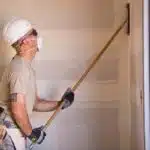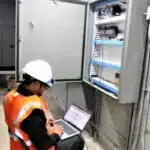As a home addition cost analyst, I have been commissioned to provide insight into the financial implications of adding an extension to your existing house. Home additions are becoming increasingly popular among homeowners who desire more living space or wish to increase the value of their property. However, before embarking on a home addition project, it is essential to assess the costs involved and determine whether it fits within your budget.
The cost of a home addition can vary depending on various factors such as location, size, and materials used. As an informed homeowner, you need to conduct thorough research and consult with professionals before making any decisions regarding your home addition project. In this article, we will explore some key considerations when estimating the cost of a home addition project and provide insights into how you can keep expenses within budget without compromising on quality.
Factors Affecting Home Addition Costs
Home additions are a popular way to add more space and value to your property. However, the cost of this project can vary significantly depending on several factors. One of the most important factors that affect the cost of home additions is whether you decide to do it yourself or hire a professional contractor. DIY home additions can be cheaper than hiring a contractor, but they require significant skill and knowledge in construction.
Another factor that affects the cost of home additions is the cost comparison with moving. Homeowners might consider moving instead of adding an addition if it turns out to be more affordable. Several factors contribute to this decision, including the current real estate market, the location, and size of your current home. While moving may seem like a more convenient and affordable option at first glance, it’s essential to consider all costs associated with relocating.
When deciding whether to add an addition or move, homeowners should weigh up all costs involved carefully. It’s important to remember that every situation is unique and requires careful consideration before making any decisions. In the next section, we’ll explore how the size of your addition can also impact costs significantly.
Size Of The Addition
When considering a home addition, the size of the addition is a crucial factor to consider. A small addition can provide numerous benefits while minimizing cost implications. A small addition can add valuable space for an extra bedroom, office, or storage area without breaking the bank.
Adding square footage to your home has many benefits. With a small addition, you can create more livable space without having to move into a new home. This is especially useful if you love your current location and don’t want to uproot your family or leave behind cherished memories. Additionally, adding a small addition can increase the value of your property and make it more attractive to potential buyers in the future.
When deciding on the size of your home addition, it’s essential to weigh the cost implications carefully. Larger additions will naturally come with higher costs associated with materials and labor. However, smaller additions are often easier to finance and require less upkeep in the long run. By choosing a smaller addition, you can save money in both the short and long term while still reaping all of its benefits.
In summary, opting for a small home addition has numerous benefits that should not be overlooked when considering additional living space. It’s essential to carefully consider all relevant factors before making any decisions about committing significant resources towards this endeavor. In our next section about location and zoning regulations, we’ll explore how these factors play into determining the cost of your home addition project.
Location And Zoning Regulations
When it comes to the cost of a home addition, the size of the addition is just one factor that must be considered. Another crucial aspect is the location and zoning regulations in your area. Depending on where you live, there may be certain restrictions or requirements that can impact both the cost and feasibility of your project.
One important consideration is zoning exemptions. These are special allowances given by local governments that allow property owners to bypass certain zoning regulations typically required for construction projects. For example, if you want to build an addition that exceeds the maximum height limit in your area, you may be able to get a zoning exemption to proceed with your plans. However, these exemptions often come with additional permitting costs, so it’s important to factor those into your budget.
Speaking of permitting costs, this is another major expense associated with home additions. In general, you will need to obtain permits from your local government before starting any construction work. This process can be time-consuming and expensive, as fees may vary depending on the scope of your project and other factors such as whether or not you need environmental impact assessments. Additionally, failing to obtain proper permits can result in hefty fines or even legal action against you.
To evoke emotion in our audience and help them better understand the costs involved in a home addition project, consider these three key items:
- Time: Home additions take time to plan and execute properly. Rushing through this process can lead to costly mistakes down the road.
- Patience: It’s important to have patience when working on a home addition project – delays are common due to permitting issues, weather conditions, and other factors outside of your control.
- Flexibility: Flexibility is essential when it comes to budgeting for a home addition project. Unexpected expenses are bound to come up during construction, so having some wiggle room in your budget can help ease financial stress.
As a home addition cost analyst, my job is to help clients understand the various costs associated with their projects. By taking into account factors such as zoning exemptions and permitting costs, I can provide a more accurate estimate of what it will take to complete the addition. While these costs may seem daunting at first, they are necessary to ensure that your project meets all legal requirements and is safe for you and your family.
Looking ahead, the next section will explore another important aspect of home addition costs: materials used. This includes everything from building materials to finishes and fixtures, so stay tuned for more information on how these items can impact your budget.
Materials Used
When planning a home addition, choosing the right materials is crucial. Not only do materials affect the overall look and feel of your addition, they can also greatly impact the cost. By selecting cost effective materials, homeowners can save money without sacrificing quality.
One option for cost effective materials is using recycled or reclaimed building supplies. These materials are often less expensive than new ones and help reduce waste in landfills. Additionally, many sustainable building materials such as bamboo flooring or eco-friendly insulation may have a higher initial cost but can lead to long-term savings on energy bills.
While it’s important to choose materials that fit within your budget, it’s also essential to prioritize durability and safety. Cheap materials may seem like a good idea at first, but they can end up costing more in the long run due to repairs or replacements. Working with a contractor who has experience with different types of building materials can help ensure that you make informed decisions about what will work best for your home addition project.
When considering the cost of your home addition project, don’t forget to factor in the expense of building materials. Choosing cost effective and sustainable options while prioritizing durability and safety can help keep your project within budget while creating a space that you’ll love for years to come. In the next section, we will discuss different types of home additions and their associated costs.
Type Of Home Addition
When considering a home addition project, homeowners must first determine the type of addition they want. The cost of a home addition can vary greatly depending on the size and complexity of the project. Homeowners can choose from a variety of design options, such as adding another level to their home, constructing a new room or wing, or expanding an existing space.
Budget planning is crucial when it comes to home additions. Homeowners should establish a budget that includes all costs associated with the addition, including materials and labor. It is also important to account for any unexpected expenses that may arise during construction. By creating a realistic budget, homeowners can ensure that their project stays on track and does not exceed their financial limitations.
When deciding on the type of home addition, it is essential to consider both design options and budget planning. Homeowners must weigh their desires against their financial capabilities in order to create an achievable plan for their project. A few key considerations when making this decision include the desired purpose of the addition, available space, and overall aesthetic goals for the property.
Key points:
- Type of home addition greatly impacts cost
- Design options must be weighed against budget constraints
- Budget planning is crucial for staying on track financially – It’s important to consider the purpose of the addition, available space, and overall aesthetic goals for the property when planning a home addition.
Building Permits And Fees
Building permits and fees are an essential aspect of the home addition process that should not be overlooked. The building permit process can be time-consuming, but it is a necessary step in ensuring that your addition complies with local regulations and building codes. Before starting construction, it’s crucial to obtain a permit from your local government agency responsible for issuing them.
Permitting fees and requirements vary depending on your location and the type of addition you’re planning. The fee for a building permit typically ranges from 1% to 2% of the total cost of construction. Additionally, some jurisdictions require separate permits for electrical, plumbing, or mechanical work. It’s essential to familiarize yourself with these requirements before starting the project, as non-compliance could result in costly fines or even having to tear down the addition.
Navigating the permitting process can be challenging, but working with a reputable contractor or architect can help make it more manageable. They can guide you through the process and help ensure that all required documents are submitted correctly and on time. By doing so, you’ll avoid potential delays in construction and additional fees due to non-compliance. In the next section, we will explore labor costs associated with home additions and how they impact overall project expenses.
Labor Costs
As a building addition cost analyst, it is important to understand the role of contractor selection and budget management in determining the overall cost of a home addition. The cost of labor is one of the biggest expenses when it comes to adding an extension to your home. Selecting a reputable contractor who has experience in handling similar projects can help you avoid costly mistakes and delays that could drive up the total cost.
When considering options for contractors, it’s important to look beyond just their pricing. A lower bid may seem like a good deal, but you’ll want to make sure they have experience in handling the specific type of addition you’re looking for, as well as proper licensing and insurance. Additionally, having open communication with your contractor throughout the project can help address any issues that arise quickly, which can ultimately save you money in the long run.
Another important factor in managing costs during a home addition project is budget management. It’s common for unexpected expenses to come up during construction, so setting aside some extra funds for contingencies is always a wise decision. Working with your contractor on developing a detailed budget and timeline can also help ensure that costs are managed effectively throughout each phase of construction.
Looking ahead to the next step in understanding home addition costs, it’s important to consider architectural and design fees. By working with an architect or designer early on in the planning stages, you can ensure that your vision for your home addition is realized while keeping within your set budget constraints.
Architectural And Design Fees
Design options are numerous when it comes to home additions, and the cost of architectural and design fees can vary depending on the complexity of the project. Some homeowners may choose to work with a design-build firm that offers both design and construction services. This option can save time and money, as the same team will handle both aspects of the project. However, some homeowners may prefer to work with an architect or designer separately, which may result in additional fees.
Hiring an architect or designer is an essential part of the home addition process. These professionals play a vital role in creating a functional and aesthetically pleasing space that meets your needs. When hiring an architect or designer, it’s important to research their credentials, experience, and portfolio carefully. Ask for references and make sure they have experience working on projects similar to yours.
The hiring process can be time-consuming, but it’s worth taking the time to find the right professional for your project. Once you’ve selected an architect or designer, you’ll work together closely to create a detailed plan for your addition. This plan will include everything from layout and materials selection to lighting and finishing details. The more detailed your plan is upfront, the smoother the construction process will be down the line.
Moving on to structural changes and upgrades…
Structural Changes And Upgrades
Architectural and design fees are just the tip of the iceberg when it comes to planning a home addition. As much as we would all love to have an unlimited budget, the reality is that most homeowners need to carefully consider their financial options before entering into such a project. Home addition design should always be approached with a realistic budget in mind, and the first step is understanding the various costs involved.
Budget planning is essential for any homeowner looking to undertake a home addition project. Understanding what you can afford will help you make important decisions about the scope of your project, including which materials to use and which contractors to hire. In general, you can expect your home addition costs to include everything from building permits and inspections to labor and material expenses.
Structural changes and upgrades are another important consideration for anyone planning a home addition. Depending on the size of your project, you may need to reinforce your existing foundation or install new support beams. Other structural changes may include adding extra insulation or upgrading your HVAC system. By working with experienced professionals, you can ensure that all necessary structural changes are made properly and efficiently, while keeping within your established budget.
As you move forward with planning your home addition project, it’s important not to overlook plumbing and electrical costs. Depending on the scope of your project, these expenses could add up quickly. Plumbing costs may include installing new pipes or extending existing ones, while electrical costs could involve upgrading your existing system or running new wiring throughout your home. By taking these factors into account during the budget planning phase of your project, you can avoid unexpected surprises later on down the line.
Plumbing And Electrical Costs
Plumbing costs can vary greatly depending on the size and complexity of the project, with additional costs for materials, labor, and permit fees. Electrical costs can be significant, depending on the amount of wiring needed and whether or not the project requires a panel upgrade. Certain safety standards and codes must be met, and the costs associated with meeting these standards can be substantial. It is important to consult a professional to help determine the full cost of a home addition project, as plumbing and electrical costs can be a significant factor in the overall cost.
Plumbing Costs
When it comes to home additions, plumbing installation can be a significant cost. Homeowners may feel overwhelmed with the prospect of adding new pipes and fixtures to their property, but it’s an essential aspect of the project. Plumbing costs vary depending on the complexity of the installation, so it’s crucial to consult with professionals to determine the best course of action.
Maintenance costs should also be considered when planning a home addition. Plumbing systems require periodic upkeep, and neglecting them can lead to costly repairs down the line. Regular maintenance by licensed professionals is necessary to ensure that everything is functioning correctly and prevent any potential issues from becoming more significant problems.
Overall, plumbing costs can range from several thousand dollars for a basic installation to tens of thousands for a more complex system. It’s essential to budget accordingly and work closely with contractors to ensure that everything is installed correctly and according to local building codes. While these costs may seem daunting at first, investing in quality plumbing during a home addition project will ultimately save homeowners money in the long run by preventing potential issues from arising.
Electrical Costs
When planning a home addition, it’s essential to consider the costs of plumbing and electrical upgrades. While we’ve discussed the plumbing costs in the previous subtopic, now we’ll focus on electrical costs. Upgrading electrical systems is crucial for safety considerations and compliance with local building codes.
Electrical costs can vary significantly depending on the scope of work required. For a basic installation, homeowners can expect to spend several thousand dollars, while more complex systems can cost tens of thousands. It’s important to remember that cutting corners on electrical upgrades can be dangerous and lead to potential hazards down the line. Therefore, it’s recommended that homeowners work closely with licensed professionals during the planning process to ensure that everything is done correctly.
In addition to installation costs, regular maintenance should also be considered when factoring in overall electrical expenses. Homeowners should schedule periodic inspections by licensed electricians to ensure that their systems are functioning correctly and identify any potential hazards before they become significant problems. Overall, investing in quality electrical upgrades during a home addition project will provide peace of mind and keep everyone safe for years to come.
Hvac System Upgrades
Upgrading HVAC systems is an important consideration when planning a home addition. A new addition to the house increases the overall square footage and hence, demands more heating and cooling capacity. Upgrading the HVAC system will not only ensure that your living space is comfortable but also help in reducing energy bills by improving energy efficiency.
There are several options for upgrading HVAC systems depending on the type of system installed in your home. Some options include upgrading to a high-efficiency furnace or heat pump, installing zone control systems, or adding insulation to existing ductwork. These upgrades can significantly improve energy efficiency and reduce monthly utility bills.
Upgrading your HVAC system can be expensive, but it is a worthwhile investment in the long run. The cost of upgrading depends on several factors such as the size of the system, type of equipment, and complexity of installation. However, it is essential to note that investing in an efficient HVAC system will save you money in energy bills over time and increase the resale value of your property.
- Benefits of upgrading HVAC system:
- Improved energy efficiency
- Lower monthly utility bills
- Increased resale value of property
Incorporating upgrades to your HVAC system during a home addition project can benefit you both financially and comfort-wise. Proper planning and consultation with an expert can help ensure that you get the most out of your investment. In the next section, we will discuss another crucial aspect of home additions: exterior finishes and landscaping.
Exterior Finishes And Landscaping
Exterior finishes and landscaping are crucial components of any home addition project. They enhance the curb appeal and increase the overall value of your property. When selecting materials for exterior finishes, it is important to consider the durability, maintenance requirements, and aesthetic appeal of each option. Common materials used for siding include vinyl, wood, brick, stucco, and stone. For roofing, options include asphalt shingles, metal panels, clay tiles, and slate.
Hiring contractors for exterior finishes and landscaping is equally important as choosing the right materials. You want to ensure that you hire a reputable contractor who has experience in handling similar projects. It is recommended that you obtain at least three quotes from different contractors before making a decision. This will allow you to compare their prices and services offered. Additionally, you should ask for references from previous clients to gauge their level of satisfaction with the contractor’s work.
In summary, selecting the right materials for exterior finishes and landscaping can significantly impact the overall cost of your home addition project. Working with a reputable contractor can also ensure that your project is completed on time and within budget. As such, it is essential to take time in researching potential materials and contractors before starting your project to guarantee its success.
Transition: Now that we have discussed the importance of exterior finishes and landscaping in a home addition project let us move on to exploring financing options available for those looking to undertake such projects.
Financing Options For Home Additions
As the old adage goes, “A penny saved is a penny earned.” When it comes to financing a home addition project, homeowners should consider all available options to save money in the long run. Two popular financing options for home additions include home equity loans and personal loans.
Home equity loans allow homeowners to borrow against the value of their property. The loan amount is typically based on the difference between the current market value of the home and any outstanding mortgage balances. Home equity loans may offer lower interest rates than other types of loans because they are secured by the home. However, homeowners should be aware that if they fail to make payments on a home equity loan, they risk losing their property.
Personal loans are another option for financing a home addition. These unsecured loans do not require collateral and may have higher interest rates than secured loans, such as home equity loans. However, personal loans can be easier to obtain and may offer more flexible repayment terms.
When considering financing options for a home addition project, homeowners should carefully evaluate their financial situation and choose an option that best suits their needs. It is important to weigh the benefits and drawbacks of each option before making a decision.
Transition into subsequent section about cost-saving tips for home additions:
While financing options play a critical role in funding a home addition project, there are other ways homeowners can save money during the construction process. By implementing cost-saving tips and strategies, homeowners can stretch their budget further and achieve their desired results without breaking the bank.
Cost-Saving Tips For Home Additions
Now that you are aware of the financing options for your home addition, let’s delve into how much it will cost. The cost of a home addition varies depending on several factors such as the size, materials used, and location. According to HomeAdvisor, the average cost for a home addition in 2021 is $45,000-$111,000. However, this can be reduced with budget-friendly designs and DIY tips.
To save on costs, consider opting for simple designs that do not require complex structures or expensive materials. A square or rectangular shape is often cheaper than an irregular shape with multiple angles. Additionally, consider using salvaged or recycled materials instead of new ones. DIY home addition tips are also a great way to cut back on costs. You can perform some tasks such as demolition, painting or installing fixtures yourself with proper guidance.
In conclusion, by following these budget-friendly designs and DIY tips, you can significantly reduce the cost of your home addition project. However, if you lack the necessary skills and experience in construction work, it may be best to hire a professional home addition contractor who can ensure quality work and a smooth process from start to finish. In the next section we will discuss some important considerations when hiring a professional contractor for your home addition project.
Hiring A Professional Home Addition Contractor
Let’s say you’ve decided to add a new room to your home. You might be thinking of taking on the task yourself, but before you do, consider hiring a professional contractor. A case study shows that a homeowner attempted to build an addition to their house without professional help and ended up spending twice as much money as they would have with a contractor.
Hiring a professional home addition contractor has numerous benefits. Firstly, contractors have experience in designing and building additions, which means they can provide valuable insight into making the most of your space. They also have connections with suppliers and can purchase materials at lower costs than if you were buying them yourself. Additionally, having someone else manage the project can relieve stress and give you peace of mind knowing that everything is being handled correctly.
On the other hand, there are risks associated with attempting a DIY home addition project. Without proper experience and knowledge, mistakes can be made during construction, leading to additional costs and potential safety hazards. Furthermore, DIY projects take longer to complete than those done by professionals because homeowners may need time to research or learn new skills. When it comes down to it, hiring a professional is often the more cost-effective option for adding value to your home while ensuring quality workmanship.
Benefits of Hiring a Professional Home Addition Contractor
- Experience in designing and building additions.
- Connections with suppliers for material purchasing.
- Relieves stress and provides peace of mind.
Risks of DIY Home Addition Projects
- Potential for mistakes leading to additional costs.
- Safety hazards due to lack of knowledge/experience.
- Longer completion time compared to professionals.
- Higher overall cost due to purchasing materials at retail price.
In summary, while it may seem tempting to take on a home addition project yourself in order to save money upfront, there are significant advantages in working with a professional contractor who has experience and connections within the industry. The risks involved in attempting such projects without proper knowledge and experience far outweigh the potential benefits of saving money. Ultimately, hiring a professional home addition contractor can lead to a more efficient and cost-effective project with higher quality results.
Conclusion
The cost of a home addition varies depending on several factors such as the size and type of addition, location and zoning regulations, materials used, and exterior finishes. Homeowners looking to add an extra room or expand their living space need to consider these factors before embarking on a home addition project.
It is important for homeowners to hire a professional contractor who can provide an accurate estimate of the costs involved in the project. With careful planning and budgeting, a home addition can be a great investment that adds value to your property. Whether it’s adding a new bedroom, expanding your kitchen or building a new garage, the cost of a home addition should not deter you from making your dream home a reality. By considering all the factors involved and exploring available financing options, you can make informed decisions that will help you achieve your goals without breaking the bank. So go ahead, start planning your dream home addition today!
Image Credits
- “Gable end of home addition, Marvin windows” by Brock Builders (featured)

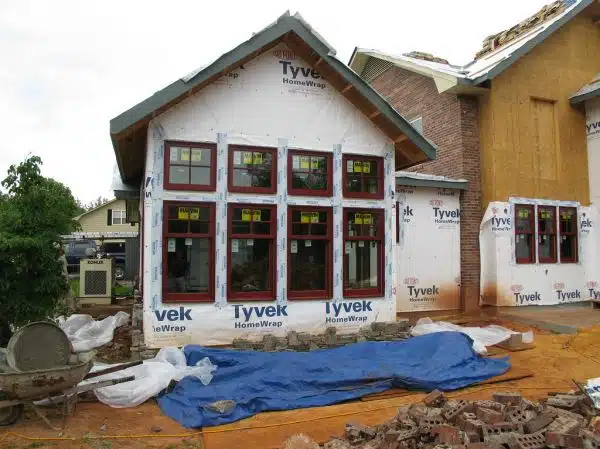


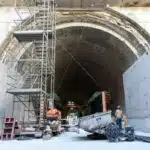

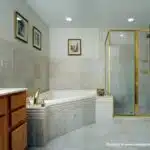

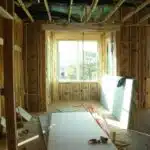

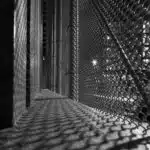









![Calculating How Much Stone Dust You Need 20 [Blog Post]Stone Dust © Oxfam Australia](https://green-life.blog/wp-content/uploads/2023/05/GdZVzgTqPhjq-150x150.jpg.webp)






